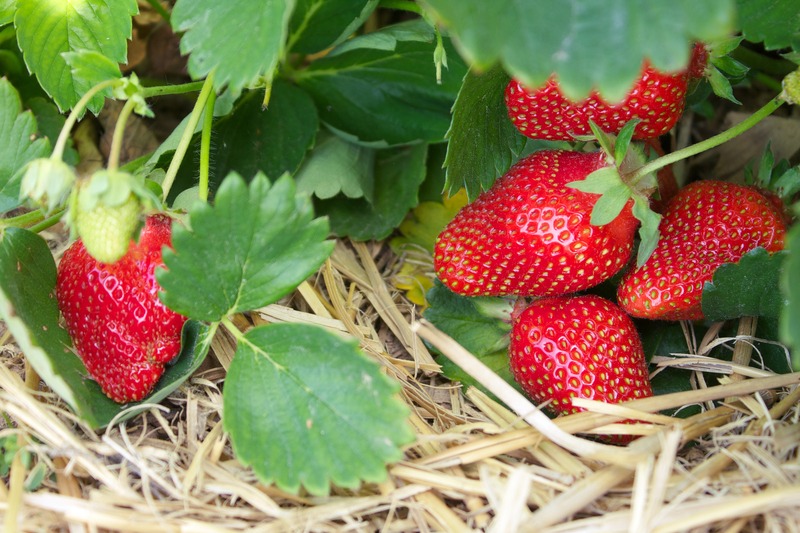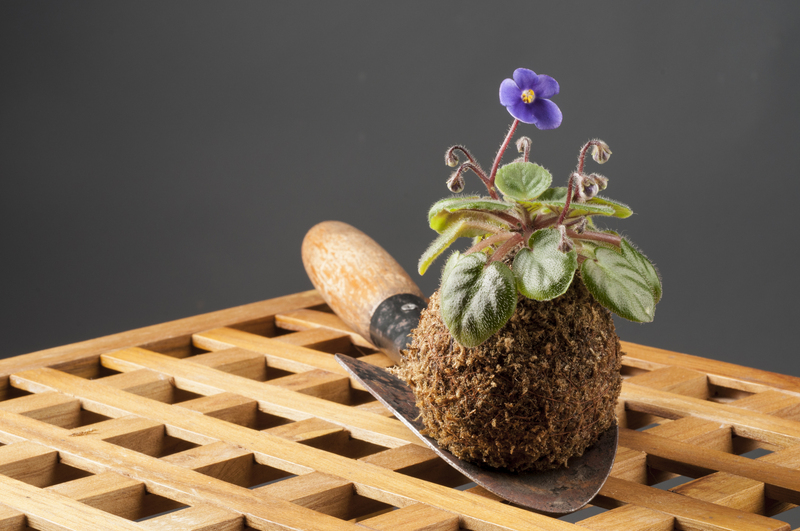Cultivate Success with These Must-Have Gardening Tools
Posted on 23/06/2025
Cultivate Success with These Must-Have Gardening Tools
Gardening success doesn't happen by chance. Whether you are a complete beginner or an experienced enthusiast, the foundation of a thriving garden lies in having the right instruments at your disposal. Unearth your garden's full potential by mastering the essentials--discover the must-have gardening tools that promise to make every planting season bountiful, efficient, and truly enjoyable.
Why Quality Gardening Tools Are Fundamental to Your Success
Investing in top-tier gardening items isn't just for professionals. The right tools empower home gardeners to:
- Boost productivity and efficiency
- Protect your health by preventing unnecessary strain
- Achieve cleaner, more precise results
- Promote the health and longevity of your plants
- Enjoy gardening as a relaxing, satisfying hobby
Let's dig deeper into the essential gardening tools every gardener should own, their various uses, key tips, and how to care for them.

Essential Gardening Tools for Every Gardener
1. Spade: The Indispensable Workhorse
The classic garden spade stands at the forefront of any tool collection. Its strong, flat, and sharp blade makes digging, edging, and moving soil a breeze.
- Best for: Digging holes, trenching, transplanting, edging garden beds, and breaking ground.
- Choose stainless steel blades with a comfortable, robust wooden or fiberglass handle for longevity and comfort.
2. Hand Trowel: The Multitasker's Choice
For precision work, nothing beats a durable garden hand trowel. It's perfect for planting seedlings, moving soil, or weeding up close.
- Best for: Planting bulbs and flowers, transplanting seedlings, removing weeds, and mixing soil amendments.
- Look for a trowel with a firm grip and a durable, rust-resistant blade.
3. Pruning Shears: Trim to Perfection
Pruning shears or garden secateurs help you keep your plants healthy and well-shaped by removing dead or overgrown stems and branches.
- Best for: Pruning herbs, shrubs, flowers, and small branches.
- Bypass pruners are best for live stems; anvil pruners work well on dead wood.
4. Garden Fork: Aerate and Turn Soil with Ease
The sturdy garden fork is vital for loosening, lifting, and turning over heavy or compacted garden soil. Its tines penetrate deep, making soil preparation easy and efficient.
- Best for: Breaking new ground, integrating compost, and aerating soil.
- Pick forks with thick, strong tines for heavier soils.
5. Garden Hoe: Weed Out the Competition
Hoes come in multiple shapes but serve the universal function of cultivating and weeding garden beds. A sharp hoe makes slicing through weeds and shaping soil ridges swift and simple.
- Best for: Weeding, shaping beds, and hilling root vegetables.
- Opt for a blade design that matches your gardening style (draw hoe, scuffle hoe, or stirrup hoe).
6. Watering Can: Quench Your Garden's Thirst
The humble watering can is a staple for nurturing tender seedlings or container plants. Precise, portable, and gentle, it delivers water without disturbing delicate soil or foliage.
- Best for: Watering houseplants, container gardens, and raised beds.
- Seek a balanced handle and a removable rose spout for targeted or gentle showers.
7. Gardening Gloves: Protect Your Hands
Every gardener needs a sturdy pair of gardening gloves. They shield your hands from thorns, blisters, and dirt, letting you work longer with greater comfort.
- Best for: All gardening tasks--planting, pruning, digging, and weeding.
- Choose gloves that fit snugly, are made of breathable but durable material, and offer reinforced fingers for extra protection.
8. Wheelbarrow or Garden Cart: Move Mountains (of Soil)
A reliable wheelbarrow or garden cart makes transporting soil, mulch, compost, plants, and tools less of a chore.
- Best for: Hauling heavy or bulky items around the garden.
- Consider the load capacity, maneuverability, and durability when selecting a model for your needs and terrain.
Specialized Tools for the Ambitious Gardener
Ready to take your gardening to the next level? In addition to basic garden tools, the following specialized gear can help with more advanced projects:
- Loppers: These long-handled pruners tackle thick branches beyond the reach of regular shears.
- Soil Knife (Hori Hori): A hybrid blade for digging, cutting, weeding, and measuring planting depths.
- Garden Rake: Ideal for spreading soil, compost, or mulch, and for removing debris.
- Transplanter: For moving and spacing young plants accurately.
- Seedling Dibber: For creating uniform planting holes in seed trays or beds.
How to Choose the Best Gardening Tools for Your Needs
Considerations When Purchasing Gardening Tools
- Ergonomics: Choose tools that fit comfortably in your hands to reduce strain and fatigue.
- Material Quality: Stainless steel or carbon steel blades last longer and resist rust.
- Weight and Balance: Lightweight tools are easier to maneuver, while balanced ones prevent wrist or arm discomfort.
- Maintenance Ease: Tools with removable or replaceable parts are easier to clean and repair.
- Storage: Consider hanging loops or compact designs for easy organization in sheds or garages.
Top Brands and Recommendations
- Fiskars: Renowned for ergonomic designs and sharp, reliable blades.
- Felco: Famous for professional-grade pruning shears with replaceable parts.
- Spear & Jackson: Offers traditional, highly durable spades and forks.
- Burgon & Ball: Stylish, well-made hand tools for serious and stylish gardeners alike.
Maximize Success by Maintaining Your Garden Tools
Your gardening tools are an investment. Proper care ensures they remain sharp, safe, and effective year after year. Here are expert tips to keep your gardening equipment in top shape:
- Clean after each use: Remove soil and sap with a brush and clean water.
- Dry thoroughly: Prevent rust by storing tools dry.
- Sharpen blades regularly: Sharper tools make gardening easier and safer.
- Oil moving parts: Use light machine oil to lubricate pruners and shears.
- Store wisely: Hang on hooks or store in a dry shed to extend lifespan.
Gardening Tool Safety: Protect Yourself While Cultivating
Safe gardening means enjoyable gardening! Follow these essential safety tips:
- Wear gloves and protective eyewear during pruning or when digging in unknown soil.
- Use the right tool for the job--improvised tools can cause injury or damage plants.
- Maintain tools to prevent slips or malfunctions.
- Store sharp tools out of children's reach and lock up dangerous chemicals or power tools.
Environmentally Friendly Gardening: Tools that Make a Difference
As sustainable gardening grows in popularity, so does the need for eco-friendly garden tools. Here's how you can nurture the planet as well as your plants:
- Choose wooden handles from certified sources.
- Select stainless or recycled steel tools over plastic options.
- Opt for manual over powered equipment to reduce fossil fuel use.
- Maintain your tools for extended lifespan--reducing landfill waste and saving money.
Organizing Your Garden Tools for Maximum Efficiency
Keeping your essential gardening tools organized boosts productivity and prevents frustration. Try these tips:
- Wall-mounted racks: Save space and keep popular items within arm's reach.
- Mobile caddies or tool belts: Convenient for large gardens and quick jobs.
- Personalize your tools: Mark handles with bright tape to easily spot them in grass or soil.
- Dedicated storage sheds: Provide shelter from weather and organized shelves/pegs for every tool.

Frequently Asked Questions About Gardening Tools
What is the most important gardening tool for beginners?
For those just starting, a good hand trowel is highly recommended due to its versatility and affordability. Combine it with pruning shears and gloves for a starter set that covers most tasks.
How often should garden tools be cleaned and maintained?
Clean tools after every use, especially after working in wet or clay soils. Sharpen blades and oil moving parts at least once per season for optimum performance.
What are the signs that a gardening tool needs replacing?
If you notice severe rust, cracks in handles, loose joints, or loss of function (like a trowel bending or secateurs not cutting cleanly) it's time to replace the tool for safety and effectiveness.
Conclusion: Start Cultivating Success in Your Garden
Your gardening adventure is only as good as the tools you wield. By arming yourself with must-have gardening tools--from reliable spades and trowels to specialized gear and safety essentials--you pave the way for lush gardens, healthy plants, and rewarding harvests.
Don't cut corners when it comes to choosing, using, and caring for your gardening equipment. When you invest wisely and maintain your tools, you not only cultivate a thriving garden but also make your green-thumb pursuits more enjoyable and efficient.
Now's the time to assemble your perfect gardening toolkit and set your sights on new and abundant growth. Happy gardening!
```
